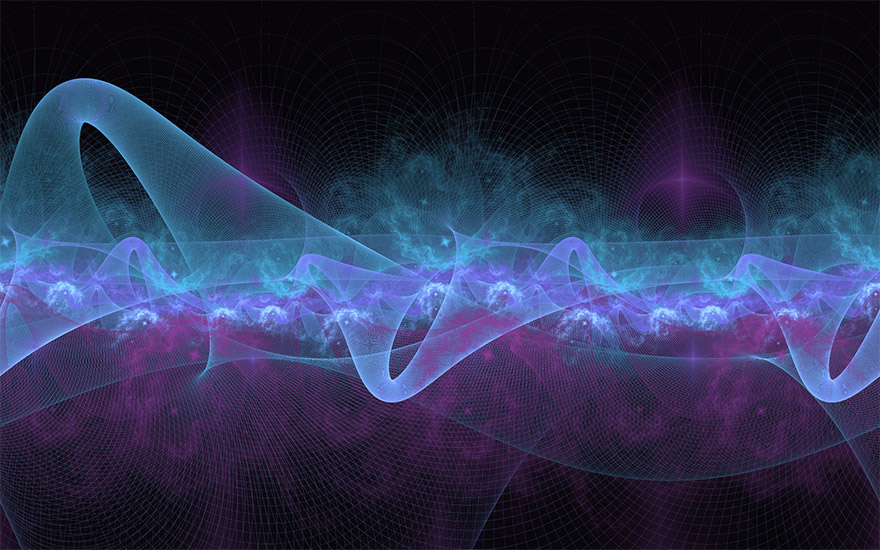Making Sense of Visions During Meditation

Meditation is a powerful tool for achieving inner peace, clarity of mind, and spiritual growth. Many people who regularly meditate report seeing intense and vivid visions, which can be confusing, or even frightening. Here we will see Making Sense of Visions During Meditation.
These sense of visions during meditation can take the form of minute impressions or intense sensory, auditory, or visual experiences that seem to go beyond the bounds of everyday reality.
Firstly, it is important to understand that the experience of visions during meditation can vary greatly from person to person. Some people may experience vivid, detailed images while others may experience more abstract or symbolic visions.
On the other hand, meditation visions may refer to visualizations or guided imagery that are intentionally used during meditation to cultivate a specific state of mind or achieve a particular goal. These visions may be created through techniques such as visualization exercises, affirmations, or guided meditations.
In this article, we will explore how to make sense of visions during meditation and how to use them to enhance your meditation practice.
The Nature of Visions During Meditation

What Are Visions During Meditation?
Meditation visions are mental images, scenes, or experiences that spontaneously arise during meditation. They can manifest in various forms, such as colors, symbols, landscapes, or even encounters with beings. These visions can be subtle and fleeting or intense and immersive, depending on the individual and their level of practice.
Why Do Visions Occur During Meditation?
Meditation visions are a natural byproduct of the mind’s attempt to settle into a state of deep relaxation and heightened awareness. They often arise as the mind transitions from ordinary waking consciousness to a more profound state of awareness. Several factors contribute to the occurrence of visions during meditation:
Subconscious Processing
During meditation, your mind accesses the vast reservoir of thoughts, memories, and emotions stored in your subconscious. Visions can be a way for your subconscious mind to communicate with your conscious awareness.
Release of Pent-Up Emotions
Meditation often serves as a release valve for accumulated stress, anxiety, and unresolved emotions. Visions can be a manifestation of these emotions as they surface and dissipate during your practice.
Increased Sensitivity
As you deepen your meditation practice, your sensitivity to subtle experiences and energies in and around you may increase. This heightened sensitivity can make you more receptive to visions and other non-ordinary perceptions.
Types of Visions During Meditation

Understanding the different types of meditation visions can provide valuable insights into your inner world. Here are some common categories of visions that meditators often experience:
Symbolic Visions
Symbolic visions are rich in metaphorical or symbolic content. They can include images of animals, objects, or scenarios that carry personal or universal meaning. Interpreting these symbols can lead to profound insights into your psyche.
Archetypal Visions
Archetypal visions involve encountering universal symbols or archetypes that transcend cultural boundaries. These symbols, such as the hero, the wise old man, or the mother, often appear in myths, dreams, and meditation visions, representing fundamental human experiences and qualities.
Past-Life Memories
Some meditators report vivid visions that seem to depict scenes from past lives. These experiences can be emotionally charged and may offer insights into unresolved karmic patterns.
Celestial and Mystical Visions
These visions transport meditators to otherworldly realms, where they may encounter divine beings, deities, or experience a profound sense of oneness with the universe.
Understanding Visions During Meditation

Interpreting meditation visions requires a balanced approach that combines intuition, self-reflection, and an understanding of symbolism. Here are some tips to help you make sense of your visions:
Cultivate Mindfulness
Mindfulness, the practice of non-judgmental awareness, can help you observe your visions without attachment or aversion. This open-minded approach allows you to explore the deeper meaning behind your visions.
Keep a Meditation Journal
Maintaining a journal dedicated to your meditation experiences can be immensely helpful. Record your visions, emotions, and any insights that arise during your practice. Over time, patterns and recurring symbols may emerge, providing clarity.
Seek Guidance
If you encounter particularly challenging or enigmatic visions, consider seeking guidance from an experienced meditation teacher or therapist. They can offer a fresh perspective and help you navigate the meaning behind your visions.
Trust Your Intuition
Ultimately, the interpretation of your meditation visions is a highly personal endeavor. Trust your intuition and the inner wisdom that arises from your practice. Your intuition can often lead you to profound insights and personal growth.
Making use of the Power of Visions During Meditation

Beyond interpretation, meditation visions can be harnessed to enhance your meditation practice and overall well-being. Here are few of the powers:
Visualization Techniques
If you encounter positive and inspiring visions, you can use them as a basis for visualization exercises. Visualizing your desired outcomes can be a powerful tool for manifesting your goals and intentions.
Emotional Healing
Meditation visions may bring repressed emotions to the surface. Embrace this opportunity for healing and release. Acknowledging and processing these emotions can lead to greater emotional balance and well-being.
Creative Inspiration
Many artists, writers, and creative individuals draw inspiration from their meditation visions. If you’re creatively inclined, consider using your visions as a muse for your artistic endeavors.
Spiritual Growth
For those on a spiritual path, meditation visions can provide glimpses into higher states of consciousness. Use these experiences to deepen your spiritual practice and explore the profound mysteries of existence.
Common types of visions during meditation

Here are some common types of visions that people may experience during meditation:
- Light: Seeing a bright light, either as a white or colored glow, is a common vision reported during meditation. This light may be perceived as soothing or energizing.
- Images: Some people may see vivid images or scenes during meditation, such as landscapes, animals, or people. These images may be symbolic or meaningful to the individual.
- Colors: People may see different colors during meditation, ranging from bright and vibrant to soft and subtle. Colors may have different meanings for different individuals.
- Symbols: Symbols may appear during meditation, such as religious symbols, geometric shapes, or patterns. These symbols may hold personal or spiritual significance.
- Past memories: Memories from the past may surface during meditation, either as visual images or emotional experiences. These memories may be related to unresolved issues or traumas.
- Future visions: Some people may experience visions of the future during meditation, such as seeing themselves in a certain place or situation. These visions may provide insight or guidance.
FAQ’S
Q: What are visions during meditation?
A: Visions during meditation are mental images that arise during the meditative process. They can take various forms, including visual images, sounds, sensations, and emotions.
Q: How can I distinguish between a vision and a thought during meditation?
A: Visions are often more vivid and spontaneous than thoughts. They may also have a dream-like quality to them and feel more immersive than normal thoughts. With practice, you will be able to distinguish between a vision and a thought more easily.
Q: What should I do if I have a vision during meditation?
A: You should observe the vision without getting too attached to it. Try to maintain a detached awareness and note what you are experiencing. If the vision becomes distracting, gently refocus your attention on your breath or mantra.
Q: How can I interpret the meaning of a vision during meditation?
A: The meaning of a vision during meditation can be open to interpretation. You can try to reflect on the symbolism of the vision and what it may represent for you personally. Alternatively, you can seek the guidance of a meditation teacher or therapist.
You May Also Like:
Conclusion
In conclusion, sense of visions during meditation can be powerful experiences that offer insights, inspiration, and guidance. However, it is important to approach them with insight and a clear understanding of their potential meanings.
By cultivating a regular meditation practice, setting intention, maintaining an open mind, and seeking the guidance of trusted mentors or spiritual advisors, it is possible to make sense of these and use them to deepen our understanding of ourselves and the world around us.
Remember to trust your intuition, honor your experiences, and integrate any insights gained from these visions into your daily life.
With time and practice, the process of interpreting sense of visions during meditation can become a valuable tool for personal growth and spiritual development.
Namaste!



